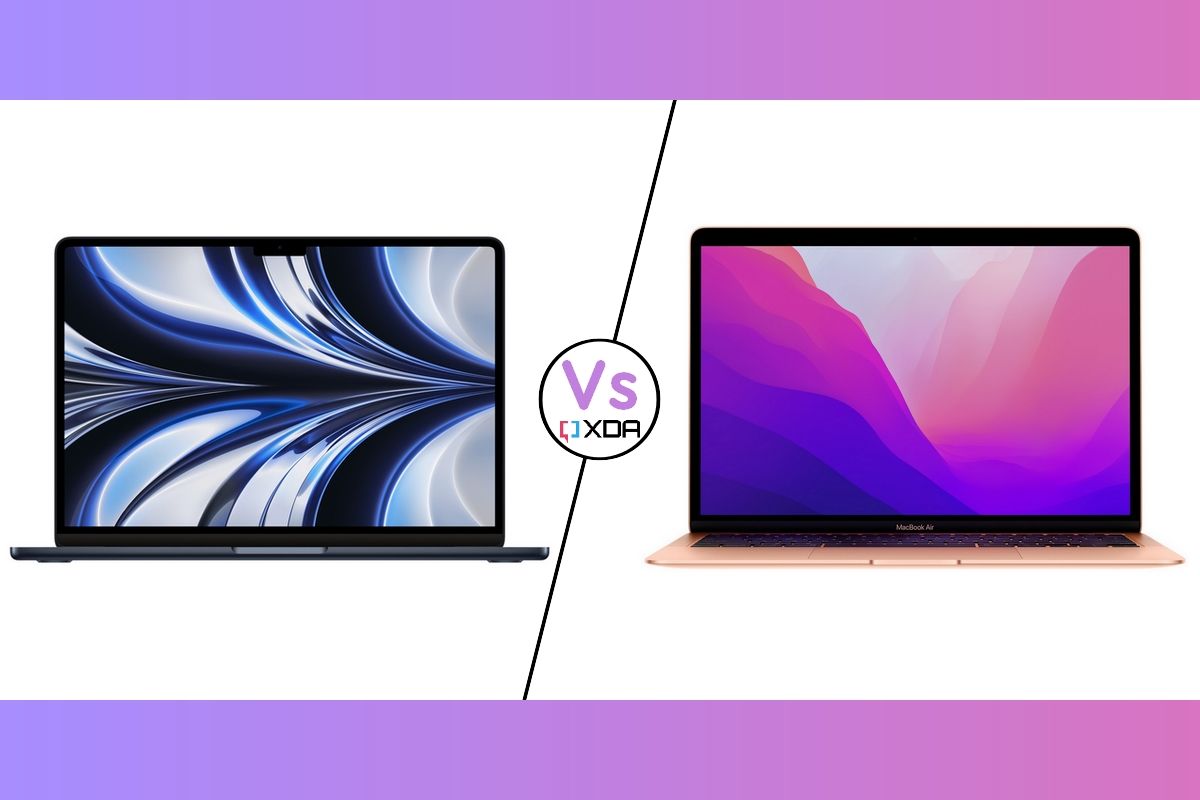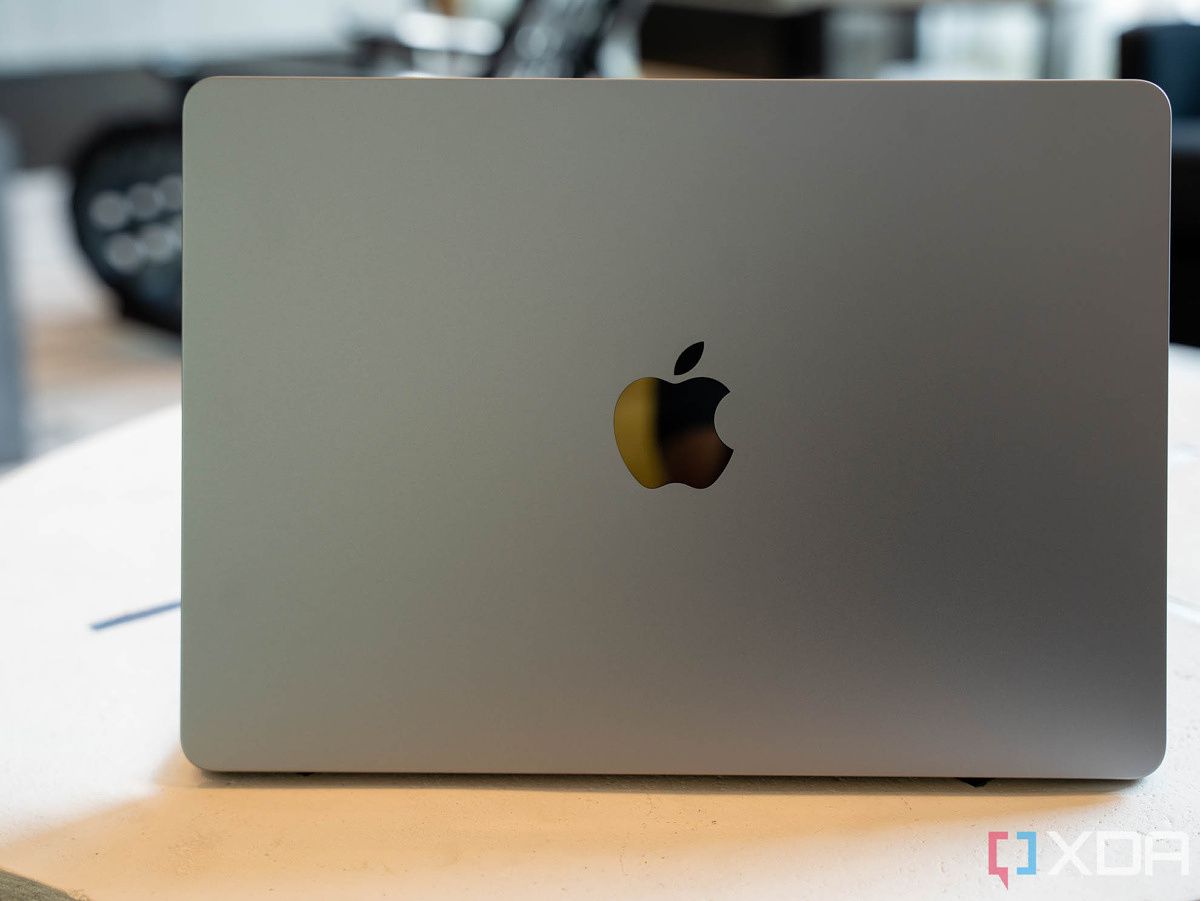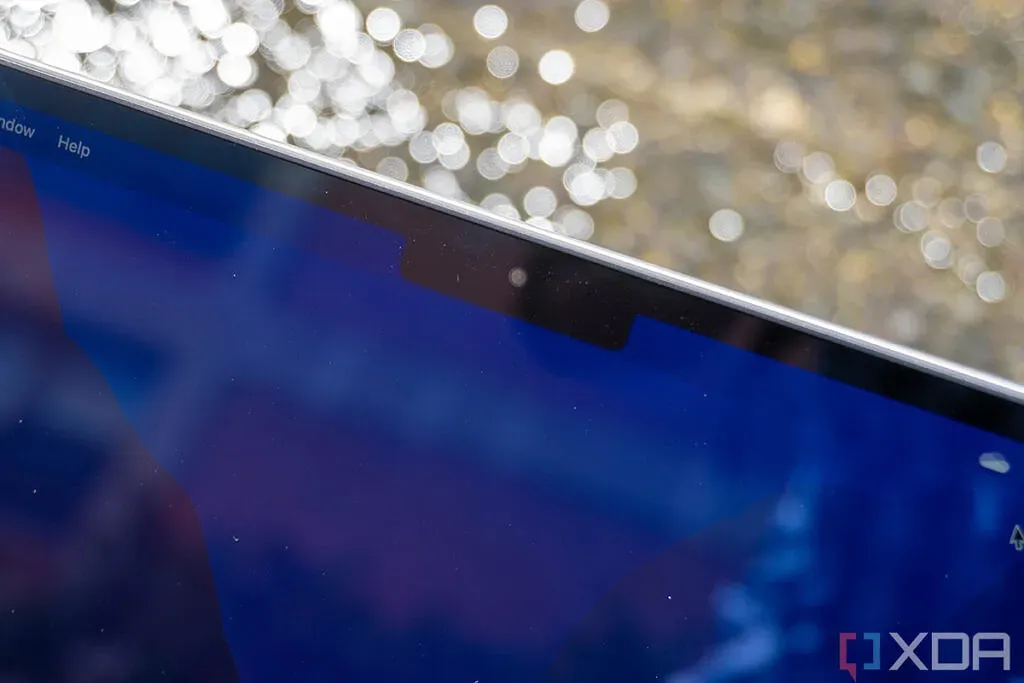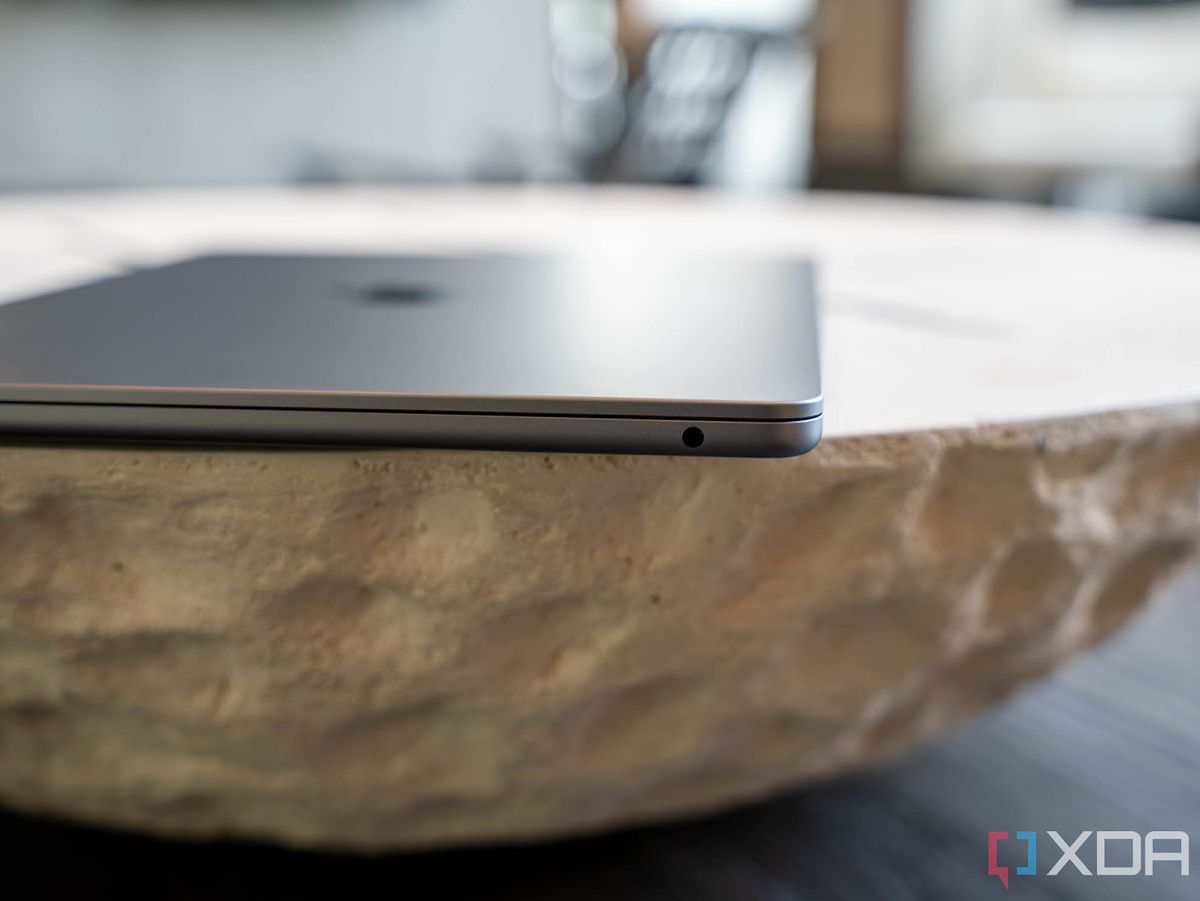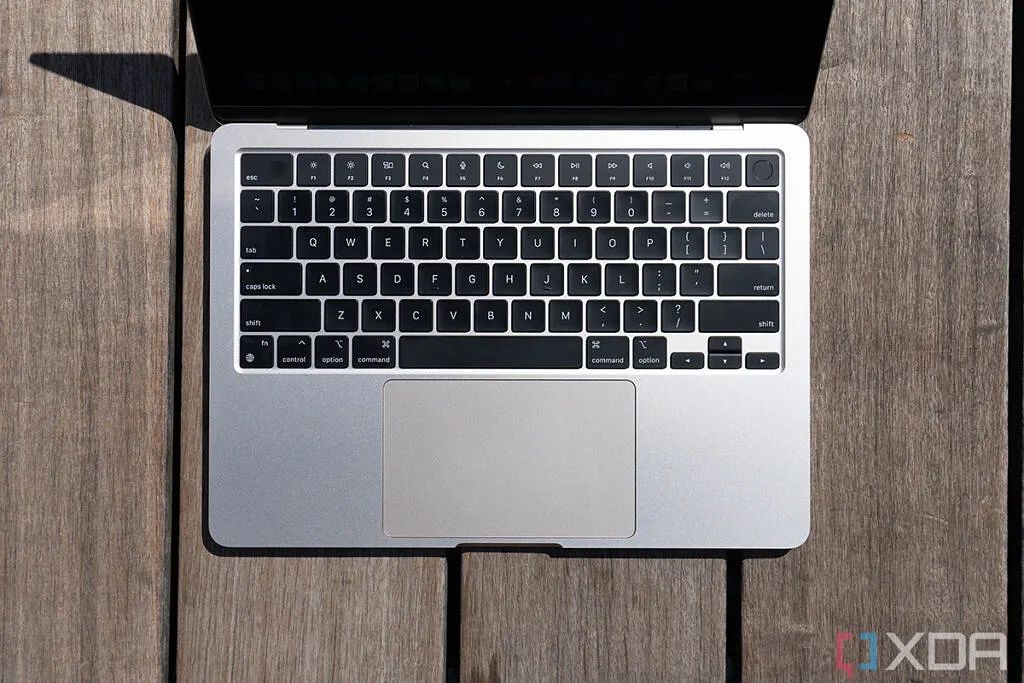Quick Links
Apple launched the first silicon-powered MacBook Air back in late 2020. Around two years later, it went ahead and revealed a completely overhauled model, featuring a chipset bump from M1 to M2, and, more notably, a fresh, boxed design. The MacBook Air M2 now follows the same design language available on the MacBook Pro (2023). This means users get to enjoy a larger, notched display, MagSafe 3 charging, upgraded webcam, and more. Expectedly, though, there's a catch; the MacBook Air M2 costs $100 more than the M1. Both notebooks are officially sold by Apple and are widely available through other retailers. So which one is better for you? Let's find out.
MacBook Air M2 vs M1: Specifications
|
MacBook Air M2 |
MacBook Air M1 |
|
|---|---|---|
|
CPU |
|
|
|
Graphics |
|
|
|
Display |
|
|
|
Storage |
|
|
|
RAM |
|
|
|
Battery |
|
|
|
Ports |
|
|
|
Audio |
|
|
|
Camera |
|
|
|
Biometric authentication |
|
|
|
Connectivity |
|
|
|
Color |
|
|
|
Size (WxDxH) |
|
|
|
Dimensions |
|
|
|
Price |
|
|
Performance: The Apple M2 is a big upgrade for the MacBook Air
One of the biggest changes in the new MacBook Air is its heart — the Apple M2 chipset. This is the beginning of the next generation of Apple Silicon, and compared to the M1 chip inside the previous MacBook Air, it's quite an upgrade. For starters, the M2 has 20 billion transistors, a 25% increase over the Apple M1. On the CPU side, this results in an 18% increase in performance over the Apple M1, even though it has the same number of cores. As for the GPU, it now goes up to 10 cores instead of 8, which helps deliver even better performance. Apple promises up to 35% more performance at peak power for the M2, but to be fair, the Apple M2 can use more power than the M1. However, even at the same power level, Apple promises up to 25% more performance in the M2.
To be fair, the base configuration of the Apple M2 only has eight GPU cores, too, but you should still be able to expect a performance uplift over the previous model. And if you're trying to buy a laptop now, Apple is only selling the original M1 model with a 7-core GPU, which gives the M2 more of an advantage.
The Apple M2 also features improvements in regard to the unified memory (RAM) built into the chip. Apple has increased the memory bandwidth up to 100GB/s (50% higher than with the Apple M1) and you can configure the new chip with up to 24GB of unified memory — up from 16GB in the previous model. All of this means the M2-powered MacBook Air should be able to handle more demanding and complex workloads with more assets loaded onto the unified memory.
The M2 MacBook Air can be almost 40% faster than the M1 when editing video timelines in Final Cut Pro.
In real-life performance comparisons, Apple says the new MacBook Air can be nearly 40% faster when editing complex video timelines in Final Cut Pro, or up to 20% faster when applying filters in apps like Photoshop. Those are sizable upgrades, especially if you work with large assets. On top of all this, Apple also claims the Neural Engine inside the Apple M2 is up to 40% faster than the M1, making it even better for AI-related workloads. All of those upgrades will be more noticeable if you're using apps optimized for Apple Silicon. One thing that hasn't changed with the new model is storage, which still ranges between 256GB and 2TB.
Display and sound: The new model is taller and brighter
The MacBook Air M2 also comes with some notable changes to the display, though they may not be as big as they appear at first. The M2-powered MacBook Air comes with a 13.6-inch display, compared to the 13.3-inch display of the M1 model. Part of that increase has to do with the fact that the screen is taller now, and it stretches closer to the edges of the chassis. That's also why the resolution is now 2560x1664, instead of 2560x1600. There are 64 additional lines of pixels to fill in the extra vertical space, but the resolution is pretty much the same.
One upgrade that's definitely worth noting is the brightness of the screen. Apple has upgraded the display to reach up to 500 nits of brightness, a 25% increase over the panel on the M1 MacBook Air. This should make the display more visible outdoors, and it now matches the 13-inch MacBook Pro. It's certainly a welcome upgrade if you want to get work done on the go. Of course, features like P3 wide color and True Tone support are also still here.
There's one potential downside with this new display, though. In order to stretch the display up and keep the webcam above the display, Apple has gone with a notched display for the new MacBook Air. To be fair, the notch will rarely cut into the content on your screen, but if you're bothered by the notch on the newer iPhone models, you probably won't like it here either.
On the other hand, the webcam itself has also received a very welcome upgrade. Instead of 720p resolution, the MacBook Air now has a 1080p FaceTime HD camera, while also benefiting from the advanced image signal processor inside the Apple M2. This should mean you're going to look great during video calls and meetings on the MacBook Air, and it could make this one of the best laptops with a 1080p webcam.
The M2 MacBook Air upgrades to a quad-speaker stereo setup, instead of the dual speakers of past models.
There's even more good news on the audio front, too. Instead of a dual-speaker setup, Apple has upgraded the M2 MacBook Air to a quad-speaker setup, resulting in more powerful and immersive sound. Apple's higher-end MacBook Pro models have typically had some of the best speakers on any laptop, and if some of that is now inside the MacBook Air, this could be one of the best speaker setups on a laptop of this size.
Furthermore, the M2-powered MacBook Air is available as a 15.3-inch variant (2880x1864). If you opt for this model, not only do you get a larger display, but you also get to utilize a six-speaker sound system with force-canceling woofers, as opposed to the four-speaker sound system available on the 13.3-inch variant. Otherwise, you get the same display and webcam technologies available on the smaller MacBook Air M2.
Design: It's lighter and (kind of) thinner now
For the first time since 2018, the MacBook Air has also received a big redesign with the 2022 M2 model. Apple has done away with the "wedge" design we've gotten used to, which means the laptop is now a flat unibody chassis, with the same thickness throughout the entire body. Specifically, it measures 11.3mm in thickness, and if you compare that to the thickest point of the M1 model, which measures 16.1mm, it's much thinner. Of course, the old wedge design makes this a tough comparison, because the old model was thinner at its thinnest point. At the end of the day, though, the new model is very thin, especially considering it's made from aluminum.
Not only that, but the new MacBook Air is also slightly lighter now. The difference is very small, but the M2 model starts at 2.7 pounds (1.24kg), which is a slight reduction from the 2.8 pounds (1.29kg) of the previous model. Considering it packs many hardware upgrades, that's pretty impressive. Expectedly, though, if you opt-in for the 15.3-inch variant of the M2 MacBook Air, then you will get a heavier machine that weighs 3.3 pounds and has wider dimensions.
Something else that's changed in terms of design is the color options available. The M1 model of the MacBook Air comes in Silver, Space Gray, or Gold colorways, but the M2 model only keeps the first two. Instead, there are two brand-new options replacing the previous Gold. First, there's Starlight, a much softer and more elegant shade of gold (taking inspiration from the iPad Air 5). Then, there's Midnight, a nearly-black option for those who thought Space Gray wasn't dark enough.
Ports: MagSafe is back
Finally, let's touch on ports. The biggest news here is arguably the return of MagSafe, with the M2 MacBook Air adopting the MagSafe 3 connector for charging, complete with support for 67W fast charging with the appropriate power adapter. If you're not familiar with it, MagSafe is a magnetic connector, which makes it easier to plug in a charger, but also makes it easier to disconnect. What that means is that if you trip on the charging cable, you won't drag your laptop to the floor and damage it, it'll just disconnect the charging cable and leave the laptop intact.
Unfortunately, that's the only change this year. The MacBook Air still has two USB4/Thunderbolt ports and a headphone jack, and that's it. And the reason we say "unfortunately" is that Apple hasn't addressed the biggest limitation with the MacBook Air, which is the number of displays you can connect at the same time. Just like the M1, the Apple M2 only supports one external display via Thunderbolt, which makes it tricky to connect more external displays. That makes Thunderbolt support a lot less meaningful.
Final thoughts: Is the M2 MacBook Air worth the price tag?
After all of this, it's evident that the M2 MacBook Air is better than the M1 model in just about every way, but is it worth the higher asking price? The M1 MacBook Air starts at $999 with an 8-core CPU and 7-core GPU, while the M2 model starts at $1,099 with its 8-core CPU and an 8-core GPU. Both models start with the same RAM and storage, but you can upgrade from there.
Whether the upgrades are worth $100 is up to you, but you're getting a lot of improvements with the M2 model: a larger and brighter display, a better webcam, a more powerful audio system, a thinner and lighter design, a MagSafe port, and, of course, more performance. If you want to get the most performance possible, you'll need to spend even more, since the 10-core GPU and 24GB of unified memory cost extra, but even without that, the M2 model is certainly going to perform better, and it has other benefits to boot. That's not to mention that it exclusively offers a larger, 15.3-inch variant.
But the M1-powered MacBook Air is still a powerful machine, and there's a reason Apple is keeping it around. You can still get a lot done with this older design, and compared to many Windows laptops, it still offers a great balance of performance and efficiency. Depending on how much you're willing to spend and the screen size you prefer, both of these are potentially among the best laptops you can buy right now.
If you can comfortably spend the extra money on the MacBook Air with the M2 chip, we'd say it's worth the upgrade, but if you're trying to buy something for a slightly lower price, then you'll still have a great experience with the M1 model. Regardless of your choice, you can buy either of the models using the links below. Otherwise, you can always check out the best Macs you can buy right now if you're looking for something even more powerful.
-
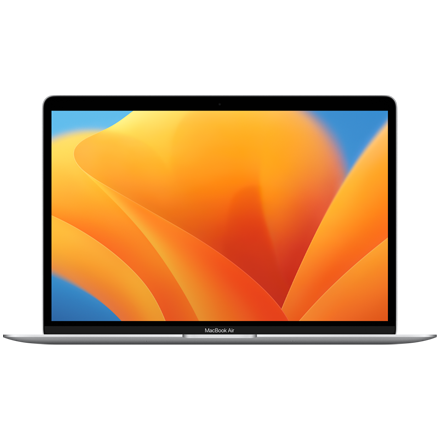
Apple MacBook Air (M1, 2020)
$556 $999 Save $443The 2020 MacBook Air comes with the original Apple M1 chipset, which is both fast and efficient. It has no active cooling, which makes it light and silent.
-
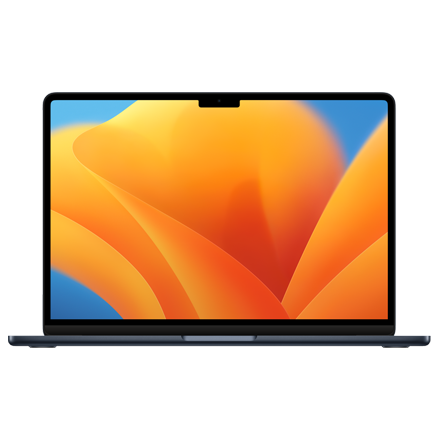
MacBook Air (M2)
The latest MacBook Air offers the M2 chip, and a redesigned chassis with MagSafe 3 support. It is powerful and can handle pretty much any kind of work, and it comes in either 13.6-inch or 15.3-inch sizes.

